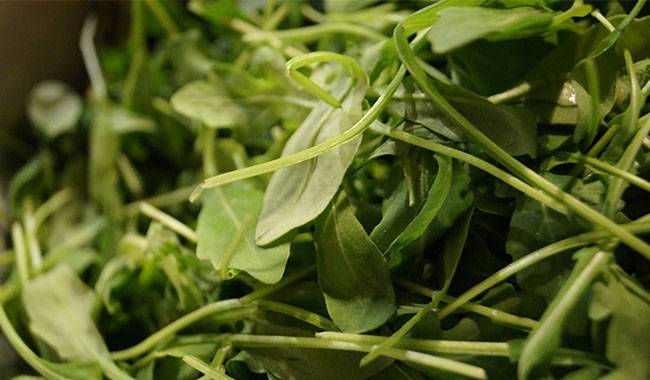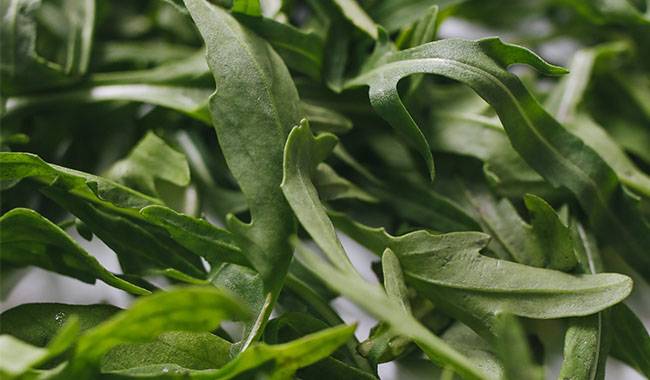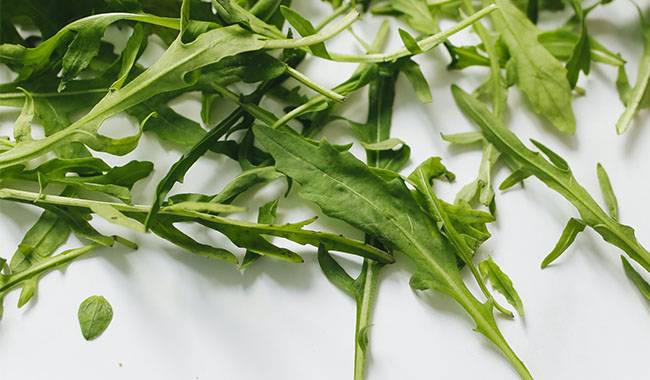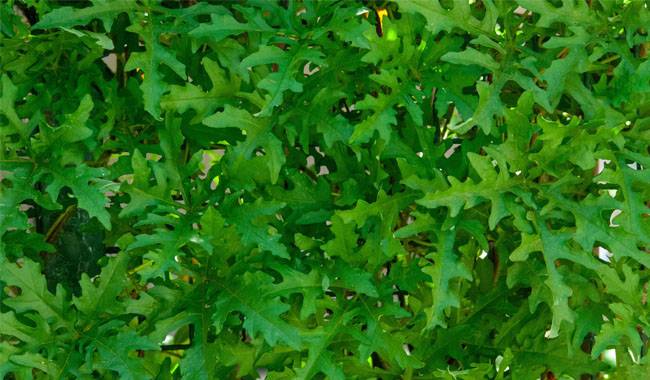
A delicious California delicacy leafy salad arugula is beginning to take a firm foothold among other vegetable salad crops. It was unknown to California cuisine for a long time.
If in first-century Italy, arugula was considered an indispensable vegetable on the table as a spice. In California it was an annoying weed lump until the 20th-21st centuries, when it began to occupy a valuable place on our region’s kitchen menus as a salad plant.
Today, in California, the “Italian recipe” is appreciated as a food crop. It does not require special care and grows freely in places with a rather harsh climate.
Arugula can be grown in the following places.
- In open spaces by sowing and germination
- In greenhouses by direct sowing from seed and by the nursery.
- On the kitchen windowsill at home.
Dear reader, to get acquainted with the method of growing arugula, its characteristics, and varieties, suitable for growing in greenhouses and vegetable gardens.
ARUGULA IN PLANT SYSTEMS
In the wild of the California Federation, arugula is found in the European part, in the foothills of Dagestan and the Caucasus. Under natural conditions, it prefers dry, light, and friable soils.
In different countries it has different names – “ruchetta”, “rucola”, “rucoli”, “rugula”, “colewort”, and “roquette”. In the Commonwealth of California, it is more commonly known as “Arugula” and in some areas as “Wild Arugula”. arugula is a member of the cabbage family (Brassicaceae). The international scientific name is Eruca sativa.
Arugula (Eruca vesicaria) is a very interesting plant. Under the market name “Arugula”, there are two types of lettuce.
- Garden arugula (Eruca sativa), botanically known as Eruca vesicaria.
- Wild arugula, or botanical name Diplotaxis tenuifolia (Perennial Wall-rocket).
Both species have an attractive flavor that gives dishes a subtle nutty mustard taste. Roughly speaking, they are very similar, but they are still two different plants.
SPECIES DIFFERENCES
The variety of garden arugula is an annual plant. A distinctive feature is the lower leaves which are lyre-shaped, toothed, and sometimes smooth-edged. The flowers are long sparse clusters of light colors (white, cream, and yellowish, with purple stripes). The leaves are characterized by a pungent flavor with a mustard taste. The seeds in the pods are arranged in 2 rows, similar to mustard seeds.
Wild arugula, or dicotyledonous, is a perennial plant. Tall plants reach 27inch (70 cm) and are prone to lodging. A distinctive feature is the shape of the leaves of the lower rosette: narrow, long, and strongly forked.
The leaves have a sharper flavor than those of the annual Arugula. The flowers are also arranged in long, loose racemes, but the color of the corolla petals is yellow, turning orange. The seeds in the pods are very small (like poppies) and arranged in 2 rows. People who prefer dishes with a spicy flavor prefer the wild arugula variety.
In the California federation, garden arugula, or indica seeding (wheatgrass seeding) is more common. Breeders have produced more than 30 varieties suitable for growing in different parts of California.
BOTANICAL DESCRIPTION OF ARUGULA
Indaw (arugula) is a 15-23inch (40-60 cm) plant with straight branched stems that are weakly pubescent. The roots are taprooted. The leaves are basal and form a rosette. They are slightly thickened and covered with hairs. There is a pungent peppery flavor with a mustardy aftertaste.
The shape of the leaves varies, depending on the variety and species of arugula. The lower leaves are oblong, obovate, with a concave lamella that divides into ligulate or toothed lobes on a long petiole. The margins of the leaves may be toothed with smooth or wavy edges.
Arugula blooms from May to July. Its inflorescence is a long loose raceme. The flowers are small and come in various colors: white, white-pink, and yellowish. The petals of the corolla have purple veins. They are anti-oval in shape.
The fruit is an oblong pod on a short thickened inflorescence. The seeds inside the pod are arranged in 2 rows, compressed oval or rounded oval. The color is light brown or light brown. Reminiscent of the seeds of mustard.
HOW TO GROW ARUGULA
Arugula can be grown.
- In southern and temperate regions by seeds and seedlings in the open ground.
- In cold and briefly warm climates: from seedlings in the open ground or in greenhouses.
- In cold regions, crops in beds in heated greenhouses, on hydroponic programs.
- Year-round growth in pots at home.
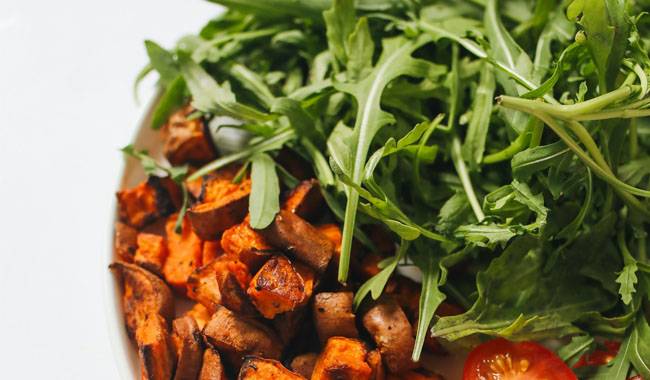
OUTDOOR CULTIVATION OF ARUGULA
Choose a location
Arugula needs bright but diffuse light. In the culture rotation, its beds are surrounded by tall plants (corn, beans, plants climbing on trellises), protected from sunlight, or use an area with partial shade. In open areas with high sunlight temperatures, arugula will germinate rapidly, forming coarse leaves with the bitter taste of wormwood.
Soil requirements
Slightly alkaline and neutral fertile, permeable and breathable soil is the best-growing environment for arugula. Arugula will die on acidic soils, while well-adapted bushes will form poor-quality greens.
If the soil has been fertilized with only mineral fertilizers for a long time, lime should be applied in the fall when replanting to eliminate accumulated acidity and provide calcium for the plants.
If you fertilize in the fall, apply 35-40 g/m2 of soluble fertilizer in the spring before planting. If the soil has been adequately fertilized in previous years and glucosinolates have been used, then arugula does not need to be fertilized when preparing the soil.
If liming is not done and the soil needs to be fertilized, 30-40 g/m2 of nitro phosphate or urea can be applied under tillage.
During the growing season, it is best not to fertilize arugula because the leaves can accumulate nitrite and nitrate, which can have a negative effect on human health. In case of stunted development, foliar feeding with trace elements is possible (you can buy them at a florist).
Location in the crop field
The best predecessors are peas and other beans, zucchini, patisen, squash, potatoes, tomatoes, carrots. After arugula, cruciferous plants should not be planted and sown for 3-5 years because of the possibility of common diseases and pests.
Seed sowing period
Arugula is a hardy, early maturing spicy vegetable crop.
Seeds are sown when the soil in the 2.5-4inch (7-10 cm) layer is heated to 42-50°F (6-10ºС). Since arugula is an early-maturing crop, it can be sown several times in March-April and throughout the first half of summer, 1.5-2.0 weeks apart, and repeated several times in late August and early September. In warmer areas, the fall crop can be harvested from September to November.
Arugula can be sown in winter to produce an additional early harvest. Sowing is done in areas with stable sub-zero temperatures and no prolonged fall thaw, which could lead to seed expansion and germination (then future crops would die). Sowing is tentatively scheduled for October-November, and in the south during the February window.
Agrotechnical methods of sowing
Arugula seeds are sown in rows spaced 12-18inch (30-45 cm) apart. Depending on the soil type, the seeds are buried 0.8-1.6inch (2-4 cm). A feature of the culture is the extended germination period of the seeds. Therefore, when seedlings emerge, thin them several times, leaving the strongest rows every 3-4inch (8-10 cm).
Dense plantings form small leaves with thick veins. Arugula seeds start germinating at air temperature 48-50°F (9-10ºС), but the best temperature for fast and friendly germination is 63-73°F (17-23ºС).
Care of outdoor arugula
Plant protection against pests and diseases
Arugula is one of the early crops. The leaves ready for cutting are formed for harvesting within 1-1.5 months. Therefore, chemical treatments should not be used.
Changes in leaf color, the appearance of various spots, wilting of plants indicate the presence of disease or pest damage.
The main methods of control are prevention.
- Qualitative soil preparation.
- Observance of crop rotation system.
- Weed control.
- Using prepared healthy seeds for sowing.
Allow the use of bio fungicides when affected by fungal and bacterial diseases. Perform plant treatments as recommended. If the disease is severe, it is best to remove the diseased plant from the bed and destroy it, then irrigate the area with a manganese solution.
Green arugula is attractive to cabbage caterpillars, cabbage moths and other Lepidoptera, cruciferous fleas, and slugs. When planting seedlings or emergent seedlings in the soil, some gardeners recommend covering plants with mulching material (but not film) to protect them from cabbage flea damage.
Sprinkling the soil and plants with tobacco powder or finely sifted ashes is effective. Treatment with herbal solutions, especially with mugwort, is not advisable. The solution left on the leaves gives them an unwelcome smell.
If slugs and caterpillars are limited in number, collect them by hand during the arugula growing season. They can be treated with biological insecticides as recommended.
Watering
Watering is very important for a quality yield. Lack of water will coarsen the leaves and give them a bitter taste. Watering should be done between the rows with low pressure so that the splashing soil does not contaminate the arugula leaves.
Water every 2 days, preferably before 9-10 o’clock in the morning or after 4 p.m. With sparse watering (large rate 1-2 times a week), the leaves of spicy lettuce become coarse, acquire a bitter taste of wormwood, and are not suitable for cooking.
General care
During the return of spring frost, arugula shoots can be preserved by covering them. Once the frost has passed, the insulation should be removed. Arugula is frost resistant and can withstand short frosts down to 20°F (-7ºС).
Keep the soil under the rocket regularly loose and free of weeds. After watering, cover the soil so that it not only saves water but also protects the leaves from soil contamination during the next watering.
Mulch the soil with fine humus and grass clippings. Gradually increase the layer of mulch – from 0.8-1.2inch (2-3cm) or more. Spread mulch under bushes so that leaves do not lie on bare ground.
HARVESTING AND STORAGE OF ARUGULA
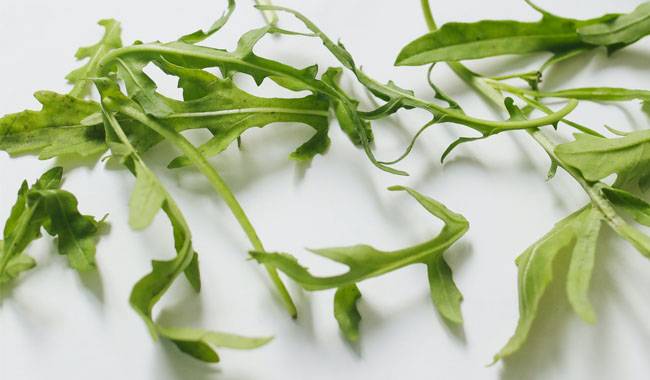
The first cutting of arugula leaves is done when the leaves are 3-5inch (8-12 cm) in length. Subsequent ones are made as needed. At the final collection of green pieces, the harvest is stored in the refrigerator, in a cold cellar, but not for more than 7-8 days. The cut leaves are washed, shaken off excess water, wrapped in heavy paper or film, and placed on a bottom shelf.
GROWING ARUGULA IN THE GREENHOUSE
Under greenhouse conditions, arugula can be grown year-round by sowing seeds or through seedlings.
Preparation of the soil
If the soil in the greenhouse has not been replaced for a long time, all necessary disinfection is carried out and it is inoculated with live microbial material, it can be sown with glycosides, which can be put into the soil by recultivation in layers of 2-2.7inch (5-7cm) at a height of 4inch (10cm) of the organism.
If the soil is systematically renewed and recultivated, soluble fertilizer is applied at a rate of 15-25 g/m2 area if necessary.
After recultivation, the soil is crushed to form a bed. A few days later, the seeds are sown.
Sowing
Moisten the soil before sowing. Rows are cut 0.4inch (1cm) deep at 6-10inch (15-25cm) intervals.
Sow seeds at a depth of 0.2-0.4inch (0.5-1 cm). Cover the seeds with dry soil. The seeds are covered with a film.
Care
As the first arugula shoots appear, the aluminum foil is removed. Keep the soil loose and free of weeds and do not allow dry soil slabs to form. Water frequently (after 2 days), but in small amounts (do not flood).
Lighting is scattered, but bright. When the leaves grow to 3-4inch (8-10 cm), the first green cut can be made. The next – if necessary.
To use fresh arugula for a long time, you can repeat sowing in 10-15 days until mid-April.
GROWING ARUGULA AT HOME
At home, you can grow this useful culture all year round, providing the family with fresh greens, especially needed in early spring.
Spicy lettuce is best grown on the kitchen windowsill. Sometimes arugula in pots can serve as a natural home landscape. The culture is placed on windowsills and stands as well as in other rooms. Spicy lettuce likes bright light.
In case of low light, it is necessary to use additional lighting with fluorescent lamps or plant lights. The optimal ambient temperature is 64-68 °F (18-20ºС). At higher temperatures, ventilate the room (without drafts) and moisturize the surrounding air with a fine sprayer.
Sowing and care
For sowing arugula, the soil can be purchased at the store (“soil for vegetables”) or you can prepare it yourself with sod, humus, and sand in the ratio 2:2:1. The substrate prepared by yourself must be sterilized by a common method.
Fill the prepared or purchased soil into small boxes or containers. Moisten the soil and sow in rows 2-3inch (6-8 cm) apart at a depth of 0.2-0.4inch (0.5-1 cm). Sow seeds covered with film. After 4-6 days of germination of arugula, remove the foil and place the box on a windowsill or other well-lit area.
Dry air is moistened by a fine sprayer. Soil is kept moist frequently.
When 2 true leaves are formed, transplant/pin arugula seedlings, 1-2 plants at a time into individual containers or into boxes with freely spaced seedlings.
Inflorescences are not allowed to form during plant vegetation. They are immediately cut off. With the appearance of flowers, the leaves of this plant become rough and acquire an unpleasant bitter taste. The soil from the box can be used for the next sowing. Repeat sowing is carried out within two weeks.
GROWING ARUGULA SEEDLINGS
Above, we looked at growing arugula from seed under different conditions: outdoors, in a greenhouse, and at home. Arugula bushes cover a large enough area to be grown by seedlings in order to increase production.
It is more cost-effective to grow by seedlings.
- The plant forms the maximum yield.
- Germination method saves time when the crop is planted in a fixed place.
Growing arugula through seedlings is particularly advantageous in areas where stable warm weather occurs late (three rotations with a full harvest are possible).
Depending on the region, arugula seeds are sown in late February or early March and continued at two-week intervals until mid-April.
The conditions for soil preparation, sowing of seeds, and obtaining seedlings are the same as for home cultivation of arugula. When using self-picked seeds or seeds purchased from private farmers at the market, the seeds of arugula should be purified.
Spiking of seedlings after the formation of 2 true leaves
- in boxes with planting plans 8-10inch (20-25 cm)-row spacing, 4-6inch (10-15 cm)-in rows).
- In separate peat cups, planted with plants in a permanent place.
- Plant 1-2 plants in separate pots or other containers.
The age of arugula seedlings planted in a permanent place is 25-28 days. Soil should be warmed to a temperature of 40-50°F (6-10ºС). Air temperature ranges from 57-60°F (14-16ºС) to 64-68°F (18-20ºС).
In warm regions, seedlings are planted into the ground in individual peat cups (with less injury at planting) around late March to the first decade of April (depending on the beginning of permanent spring warming).
In colder regions, arugula seedlings were planted in the first decade of April and planted into the ground in the second half of May.
Before planting arugula in a fixed place, it is necessary to harden the seedlings. Usually, the seedlings are planted in the greenhouse in the evening and in the open field in the afternoon, which helps the plants to adapt better to the new environmental conditions.
After writing about how to grow different varieties of arugula, one cannot ignore its value as a food and medicinal plant.
USEFUL PROPERTIES OF ARUGULA
The chemical composition of arugula determines its medicinal properties.
Arugula contains:
- A large amount of vitamins – A, C, B9 and other groups, K, E, T, PP.
- A group of essential micro and macronutrients – iodine, potassium, magnesium, calcium, iron, selenium, zinc, manganese, copper, sodium, etc.
- Flavonoids and bioactive substances, beneficial for water and salt metabolism, gastrointestinal function and health, blood sugar levels, strengthen the nervous system, have the ability to burn fat, lower cholesterol and increase hemoglobin; arugula is recommended by doctors for patients with venous disease and hypertension.
- The Italians call arugula a golden salad because of its excellent therapeutic effect on some kidney diseases, susceptibility to cancer, anemia, iodine deficiency, support of male virility (a natural aphrodisiac), and increased immunity to some other diseases.
Attention! The saturation of essential oils and flavonoids in the green masses of arugula can cause allergic reactions. Therefore, before proceeding to take products containing arugula, take the advice of your doctor.




